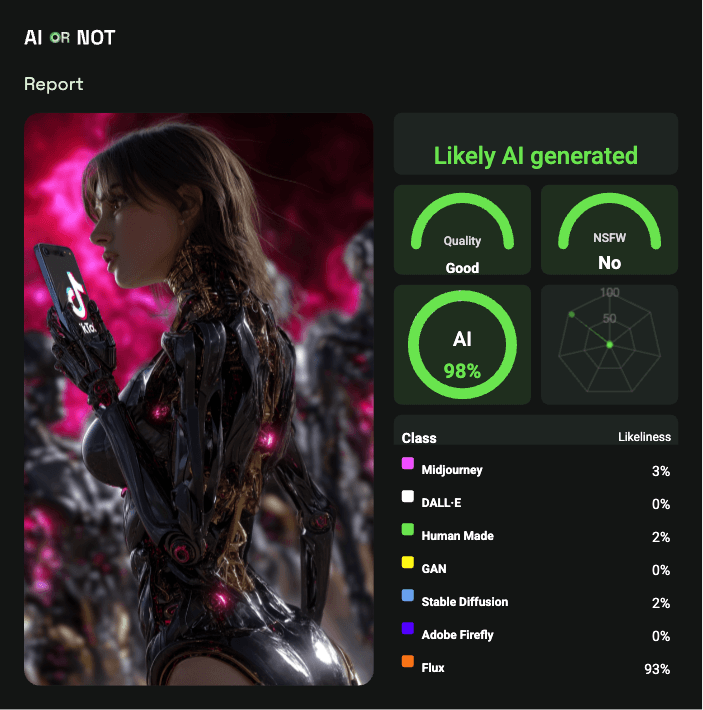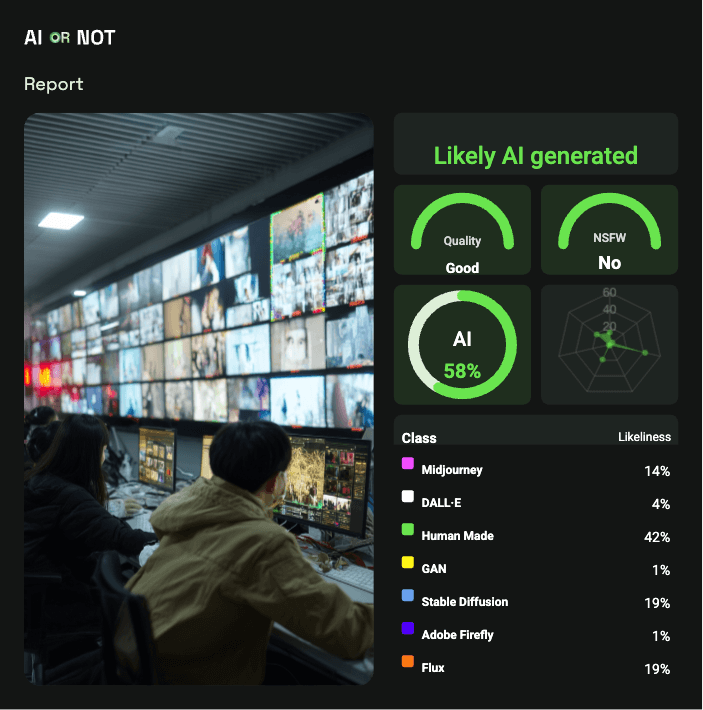China Unveils Strict AI Content Detection & Labeling Rules
Starting on September 1, 2025, all platforms will be required to label AI generated content (text, image, video, audio) in China.

China has been an active participant in the GenAI revolution: from distributing open source models to trying to find backdoor methods to acquire US made chips.
They also may be an innovator in protecting their citizens against the darkside from the use of AI. To ensure integrity and detect misinformation, AI generated content will be required to be labeled.
Is this extreme or just right? The disclosure requirements will put a compliance burden on companies, at least in the beginning. But, if the use AI to detect AI, they can be compliant quickly while complying with the new guideline.
China Implements Dual-Layer AI Content Labeling System
The country has introduced the framework that make AI-generated content labeling mandatory. These measures will go live on September 1, 2025, and create a complete a requirement for visible indicators and embedded metadata to identify AI content. Chinese authorities, in response to growing worries about fraud and fake news, will require online platforms to verify and label all AI-generated content across text and images to audio and video.
The Cyberspace Administration of China (CAC), the Ministry of Industry and Information Technology, Ministry of Public Security, and National Radio and Television Administration announced these regulations on March 14, 2025.

Image Source: Midjourney
Explicit Labels Alert Users to AI-Generated Content
The explicit labels take different forms based on modality and content type:
Text documents: Visible text prompts at beginning, end, or within the content
Audio: Voice alerts at the start or end of recordings
Images: Visible symbols in appropriate positions
Videos: Identifiers at the beginning, end, or throughout
The regulations target content that could "mislead or confuse the public" while helping users distinguish between real or not material. The goal is stop fake news, misinformation or possible scams.
Implicit Watermarks Embed Metadata for Verification
Implicit labels are digital watermarks and metadata embedded within the content's structure and invisible to users. These embedded markers contain details such as:
Content attributes
Service provider's name or identification code
Unique content reference numbers
This technical layer helps platforms, and its users, verify content origin even without visual indicators. When neither label is present, tools like AI or Not provide extra verification to ensure continued compliance.
September 1st Deadline Approaches for All Platforms
The new regulations become effective September 1, 2025, giving companies limited time to develop systems, or deploy tools, to comply. Platforms must implement a three-tier classification system:
Confirmed AI-Generated: Content with detected implicit labels requires explicit labeling during distribution
Possible AI-Generated: Content without implicit labels but reported as AI-generated by users, or AI detection systems, needs appropriate warning labels
Suspected AI-Generated: Material lacking both implicit labels and user reports but showing signs of AI generation requires cautionary labeling
The Cyberspace Administration of China emphasized these measures to "put an end to the misuse of AI generative technologies and the spread of false information".
Tech Companies Under Pressure to Deploy AI Detection Solutions
China's new AI content labeling rules are coming, and companies are scrambling to be ready. AI or Not has been building artificial intelligence for the purpose of cybersecurity and detection since its inception in 2023. The platform identifies AI-generated images, text, audio, and video content.
98.9% Accuracy Rate Demonstrated in Recent Image Tests
Recent tests confirm AI or Not's performance in image verification. The platform achieved a 98.9% accuracy rate when sorting human-created from AI-generated visual content. The AI detection tool algorithm can help with all 3 levels of classification:
Confirmed AI-generated content requiring explicit labels
Possible AI-generated content flagged through user reports
Suspected AI-generated material showing algorithmic indicators
AI or Not provides a probability, or confidence score, in each of its responses to show which content should be flagged as AI-generated while minimizing falsely flagged content.
Penalties Remain Vague But Potentially Severe
The regulatory framework doesn't specify punishment details (yet) for breaking labeling requirements. The measures simply state that "relevant competent authorities shall handle violations in accordance with their duties and relevant laws and regulations." This vagueness leaves room to interpret how severe enforcement might be. But history suggests the using of generative AI without disclosure can lead to large fines.
The CAC fined ride-hailing company Didi 8.26 billion yuan (approximately USD 1.2 billion) in 2022 for data security violations. Company executives also faced personal penalties of 1 million yuan each. Algorithm filing requirement violations usually result in fines between 10,000 to 100,000 yuan, along with possible service suspensions.
Looking at other countries as examples may provide clues as well: Spain to fine companies up to $38m for not labeling content correctly and letting through deepfakes and misinformation.
Chinese authorities will have the power to completely cancel apps and websites that disobey these measures. Ignoring anything generated by artificial intelligence can literally take a business down. Businesses publishing content will need to deploy an AI detector across their business before the fall. The AI-related issues and lessons learned in 2024 has led to the release of these requirements for AI tools.
How to Comply with China AI Rules

Image Source: Midjourney
AI Detection Report: AI or Not
Platforms will be required to highlight content as AI-generated before September 2025. Transparency, via flags, will need to be shown to users:
Confirmed AI-Generated
Possible AI-Generated
Suspected AI-Generated
AI or Not, a detection tool with 98.9% accuracy in recent image tests, provides multi-modality systems for near instant compliance.
The Cyberspace Administration of China's collaboration with other regulatory bodies shows their commitment to enforcement and protection of its citizens against the dangers of generative AI. The specific penalties aren't defined yet, but past actions point to serious risks for those who don't comply, even taking down whole platforms.
FAQs
Q1. What is China's new AI content labeling requirement? China has announced new regulations for labeling AI-generated content that require visual indicators (ie watermarks) for users and metadata for verification by the hosted service. This applies to all forms of using generative AI, including text, images, audio, and video.
Q2. When will these new AI content regulations take effect in China? The new regulations for AI content labeling are to take effect on September 1, 2025.
Q3. How accurate are AI detection tools? Leading AI detection tools, such as AI or Not, have demonstrated a 98.9% accuracy rate in recent image tests. Accuracy can vary depending on the type of content and the tool used.
Q4. What challenges will social media platforms, and companies, have with these new regulations? With the high volume of user generated content, and the speed at which news travels, human review becomes impossible as a sustainable solution. To comply with the verification requirements, most will use an AI detector.
Q5. What are the consequences and fines for non-compliance with China AI content labeling rules? While specific penalties are not yet defined nor announced publicly, they may include fines, even personal penalties for executives for knowingly ignoring, reputational damage for the company, and potential suspension of services or complete removal of apps and websites.